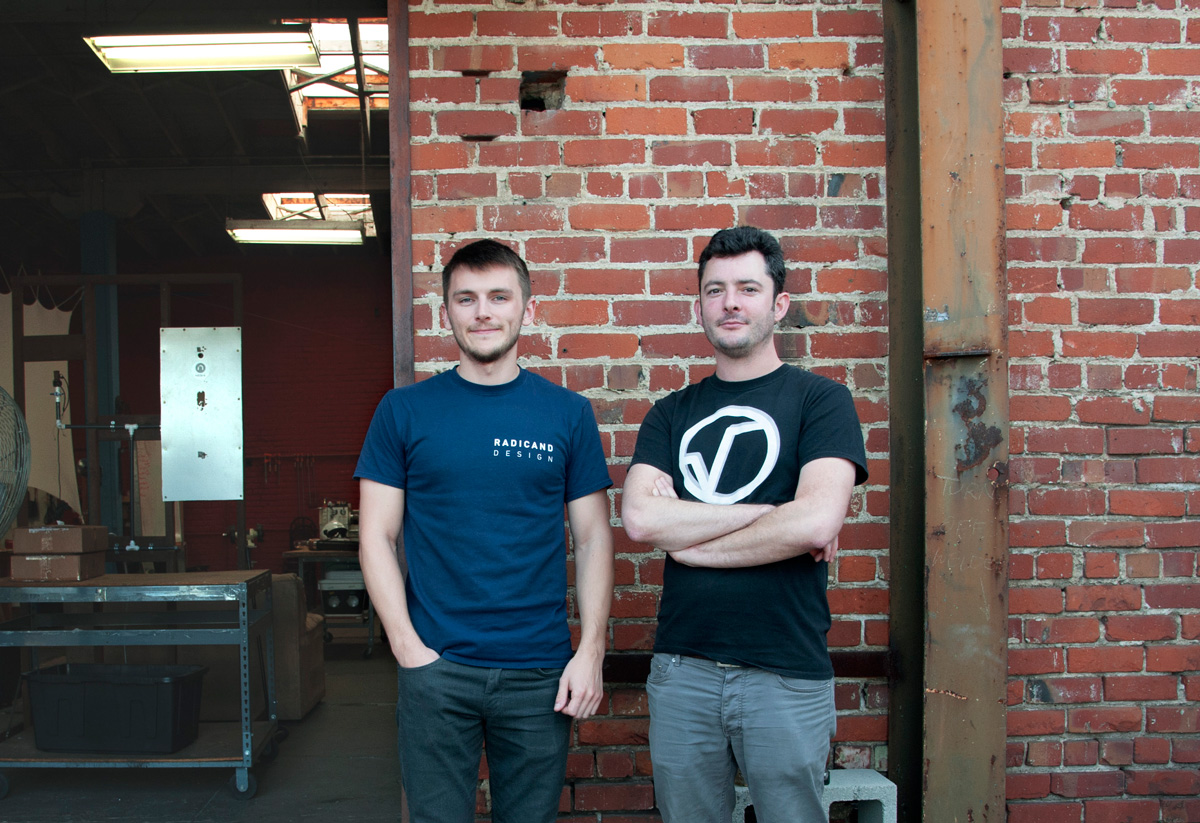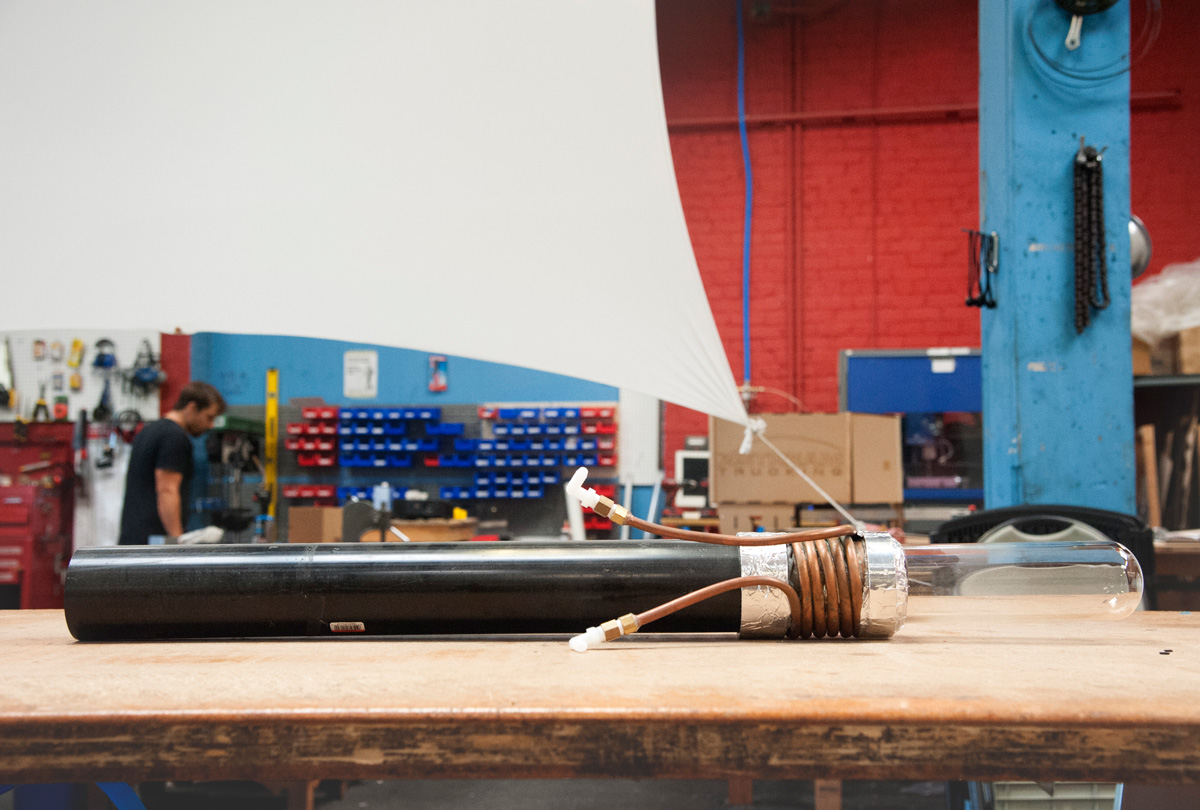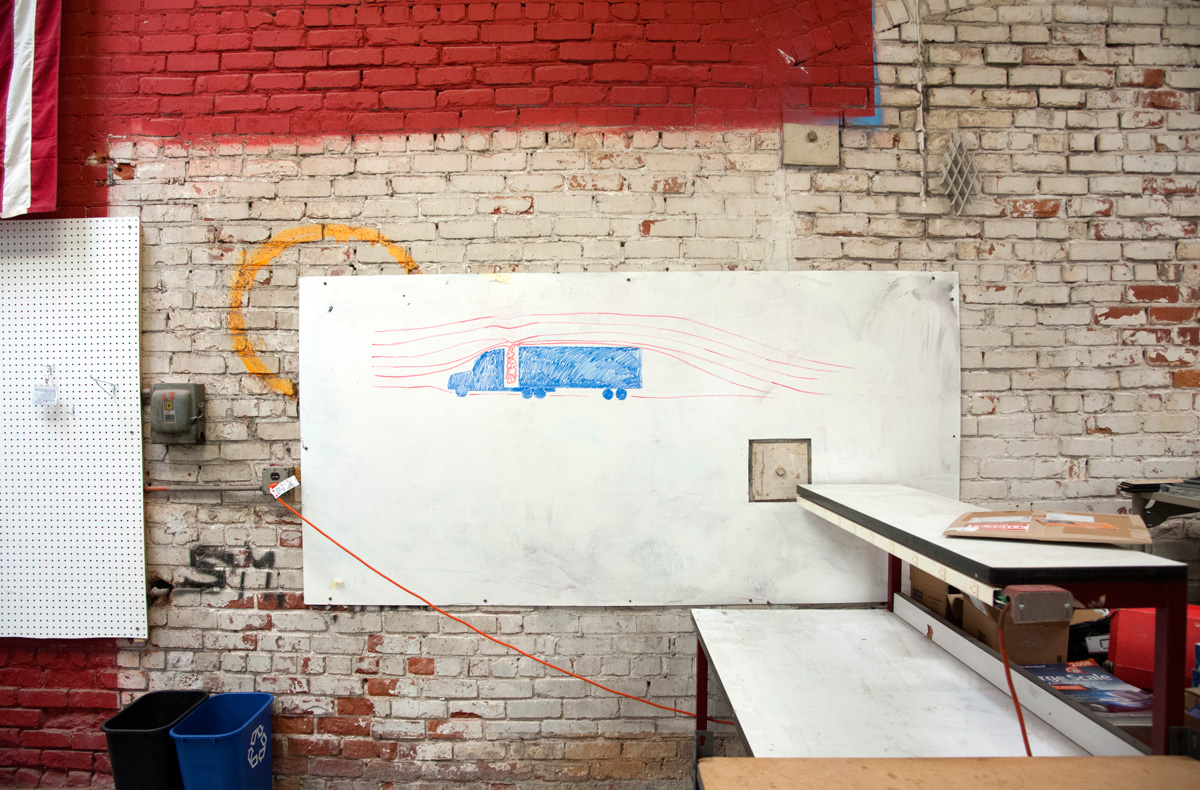Time to read: 9 min
We’ve all heard of the digital divide. But in Silicon Valley, there’s another kind of gap—the chasm between software and hardware. Hardware developers have watched for years as their software dev friends pulled down free pieces of code from GitHub, spun off app after app from their dorm rooms and garages, and wooed millions of users and millions more in investment. While they, physical product guys, have had to shell out hundreds if not thousands of their own money hiring out machinists and lab space to craft—and ship—the parts they needed for their hot ideas, in relative glacial time.
Well, hardware entrepreneurs, your day has come, and it’s called Radicand.
Part incubator, part consulting firm, and part makerspace, Radicand is a design collaboratory for hardware startups. Any hardware: consumer electronics, medical devices, even marine fishing devices. True to its mission, Radicand’s clients are 100% startups: you won’t see a GE or an Apple in their list, but you will see names that are already starting to make waves in their own right: Moxxly, Nebia, Skully.
The idea sparked when Greg Kress, a lecturer at Stanford’s Mechanical Engineering Department and former Executive Director of its ME310 Global Design Innovation program, spent a year at Aalto University in Finland. There he witnessed first-hand the university’s innovative Design Factory, a large shared workspace for engineering students that hatched real companies and real products.
“I wanted to create a collaboratory like that here, but take it a step further—blend rapid prototyping and design thinking into a product-focused incubator,” says Greg.

Veering Off the Yellow Brick Road
As Greg describes it, “Software is the yellow brick road of Silicon Valley. There’s someone holding your hand every step of the way, and it’s fast and cheap to get set up. Hardware is very different. It takes a lot of capital, equipment, expertise, physical space—and time. And you have to make a mess sometimes. There’s a lot of risk, perceived risk with hardware startups.”
Inspired by his experiences in Stanford’s ME310 and what he’d seen in Finland, Greg and the team that began to coalesce around him started thinking about how to support the hardware entrepreneurs—the guys and gals in the very early phases of their companies who might not even have a prototype yet—and how to build a community focused around a workspace with equipment and access to expertise that startups could use as their home base.
Where we set ourselves apart is how we approach prototyping and how we approach the entire hardware development process
The Radical in Radicand
A lot of what we take for granted today used to be radical, revolutionary, and innovative for some other generation, demographic, or historical age. Imagine, say, a knight on horseback texting his lady back at the castle he’ll be late for dinner because he’s fighting a dragon.
But what’s radical for us today, even with all of our high-tech this and cutting-edge that, is the concept of design thinking. Sure, most of us have heard about it, but we still have some way to go to implement it into the way we do business and the way we build startups.

Greg, who hails from the very institution that has dedicated an entire school to design thinking—yep that would be Stanford—gives us the short version.
“Design thinking puts the focus on an iterative process of collecting data. A lot of people think you should lock yourself in a cave, head down, and not come out and not show your product to anyone until it’s 100% done. Design thinking takes the opposite approach. You show it to as many people as possible, in its various stages. You need to validate your product with your users as early as possible. So if you have a set of 50 features, you can start with one or two, demo the prototype, get feedback, and iterate.”
But, explains Greg, even there, the methodology stops short of bringing engineering into the mix. That’s where Radicand rolls up its sleeves—and where its team gets excited.
Just raising money doesn’t mean you’re going to succeed
“In the tech world,” says Greg, “the base assumption of what is radical is that a very small group of people are able to move faster and accomplish more than a well-funded large corporation. You have a good idea, you prototype it, raise funding, and release it—you can disrupt an entire industry. We’ve seen that over and over again. But where we set ourselves apart is how we approach prototyping and how we approach the entire hardware development process.”
So let’s take a look at that radical new approach to hardware.
The Radicand Approach
Even among startups, differences abound. Some founders are focused full-time on business development, funding, and customers, and need a team to make the actual product. Others want to be hands-on and get involved in the design and manufacturing of their idea. Then there’s the phase they’re in. “If a team has funding and is looking to develop a product, that’s a very different set of objectives from those of a team that’s not funded and needs to build a compelling demo to get investment,” says Greg.
But all hardware startups need to produce a product, and Radicand gets that.
“It all comes down to prototyping, to strategy,” says Scott Steber, Radicand’s Director of Engineering. “And to challenging our clients’ assumptions, all the time. At that first meeting we have with a startup, we ask a lot of questions: what are the risks? What are we worried about? How can this product fail from a user experience standpoint, how can it fail from a mechanical engineering standpoint, what can go awry? We benchmark competing products and where they are with their prototypes. We want to understand what they’ve tried, what they’ve thought about, what’s unique.”
Okay, that’s the design thinking part. What about hardware dev?
There’s an important distinction between tinkering and prototyping
“Then we break that down into critical functions and critical experiences,” continues Scott, “and generate a series of prototypes that address all the factors we identify together. So we approach the whole process not just from an engineering perspective but also from a user-centered design perspective.”
Greg nods. “We fill in the blanks on a team, for a range of disciplines related to engineering and product design. It’s not uncommon for us to have physical stuff coming together on the table from day one. In one first meeting, we worked on a new kind of scissors and we went to the lab and grabbed every pair of scissors and shears we could find and lay them all out on the table.”
He pauses to let that playful image sink in, but gets right back to business. “We’re also transparent with how we do what we do because we understand that our role for our clients is temporary, and eventually when they’re up and running they will have their employees and staff, and all the knowledge we’re creating has to transfer internally their team. If we did it behind closed doors the way a lot of contracted firms do, then the value of what we’ve done will have been lost. So it’s all very fluid.

“That’s the most valuable thing we offer—our strategy for process and prototyping. Just raising money doesn’t mean you’re going to succeed.”
Prototype with a Purpose
Would you generate financial projections without researching market trends and pricing strategies? Would you build a house without scoping out the layout and integrity of the land? And yet, too many startups create prototypes of their products without understanding the purpose that a prototype serves.
“There’s an important distinction between tinkering and prototyping,” says Scott. “This is particularly true with engineers—they can get caught up with toying with ideas and tinkering with technology, but ultimately you need to prototype with a purpose. You need to understand what sort of prototype you need to build and what it’s going to tell you.”
The way Radicand does this is often surprisingly non-techie. Imagine a product that could help automate home cooking for you. Say, a temperature regulation device that would ensure you never burn your food. “I could stand there in your kitchen and intelligently—I hope!—control the temperature settings on your stovetop,” says Greg. “I recreate the experience of that product, manually. So you don’t need to build a prototype and you don’t need to go into a thousand kitchens to understand that part of the user experience. Did it work? Was it enjoyable or helpful, what does the user wish could have been done differently? That helps you get a lot of meaningful info very quickly.”
Startups think they need to build their idea to completion before testing it, but Greg and Scott both stress that the very best prototypes give you the most information possible with the fewest resources possible.
If we shoot the moon and go for this crazy out-there idea, a dark horse prototype could potentially revolutionize an industry
“Don’t try to put the entire system together from day one,” says Scott.
Radicand helps startups find the right prototyping strategy, guiding them to test the various aspects of their idea one by one, which in turn minimizes investment of time and resources in hardware development.
In other words, every prototype has a different objective.
“We do the ‘looks like’ prototype and the ‘works like’ prototype,” says Greg. “The ‘looks like’ prototype serves the single purpose of looking and feeling like the final product. It has no functionality. The purpose of the ‘works like’ prototype tests the functionality of the product, but it has no aesthetic or branding value.”
Greg and Scott look at each other, grinning.
“And then there’s the dark horse prototype.”
A Dark Horse Runs Through Town
For those uninitiated into the mysteries of horse-racing, a dark horse is the one unlikely to win, but placing a bet on that horse brings huge payoffs if he does.
Enter the “dark horse” prototype.
“We’ll intentionally try far-out things that we’re not sure will work,” says Greg. “Things big companies would automatically shoot down. We imagine, wouldn’t it be really cool if it worked this way.”
Scott jumps in. “If we shoot the moon and go for this crazy out-there idea, a dark horse prototype could potentially revolutionize an industry. It could change your feature set completely and make your product ten times better. It’s worth taking a moment somewhere during the design process for this.”
Greg nods vehemently. “And we mean, a moment. Like, less than a day. Can your product be mind-controlled? Can you generate electricity from dirt? Can you custom design materials with anisotropic mechanical properties? All of these things are possible today.”

Scott laughs, “Yeah, when you take a radically new approach and actually get something working, it can be amazing how much it outperforms what’s currently in use.”
“When you go to a more traditional engineering firm with a spec, rest assured you will not get this type of attention to new design opportunities,” says Greg. “We position ourselves to work collaboratively, challenge assumptions, solve problems and build products in innovative ways.”
Leveraging Time
All this talk about agile development brings up the inevitable issue of time. For Radicand, managing time is a bit like running a brewery: rapid prototyping requires the right type of distillation.
“In the startup world, things are unknown and things can change,” says Greg. “So we avoid planning a year out. We distill everything down to the core questions. What can we learn tomorrow? We want to get clarity on an issue next week, not next month.”
We iterate continuously and lean on emerging technologies to speed up those iterations
Time is clearly a hot button for both Greg and Scott. “In our world, Gantt charts are totally useless,” laughs Greg. “I’ve often been asked to create them by some of our larger clients and it is SUCH a waste of time in this phase—and style—of hardware development.
Scott agrees: “We can sit down for three hours and come up with a very detailed plan, or we can skip that and go spend three hours building prototypes.”
“We iterate continuously and lean on emerging technologies to speed up those iterations,” says Greg. “We can 3D print something in less than a day. We’re building, testing, and learning in these short little cycles as quickly as possible as we work toward that fully functional system prototype. So of course we have milestones and deadlines and all that but it’s really about just getting to work.”

“And flexibility,” adds Scott. “Because startups evolve over time, our role in that startup’s development may change. We may be working on different objectives three months down the road. So we need to stay flexible.”
“Basically,” laughs Greg, “We’re a startup for startups.”
Hot on Hardware
It would not be an overstatement to say that Radicand is hot on hardware. Their passion for prototyping, their uber-adaptive mindset, and complete and utter dedication to their clients’ success is infectious. But it’s their expertise, experience, and ability to turn any idea on its head that make them a force to watch.
“Having been in this business a few years, we’ve seen an enormous swell in the number of people interested in starting hardware companies, and the number of people interested in investing in hardware companies,” he says. “The old adage that hardware is too risky is being very quickly overwhelmed by a tremendous amount of enthusiasm and investment. We’re only beginning to see the explosive potential of hardware startups.”










